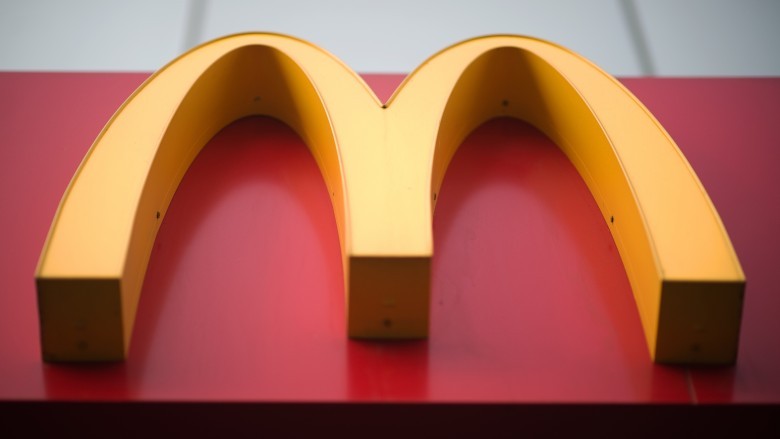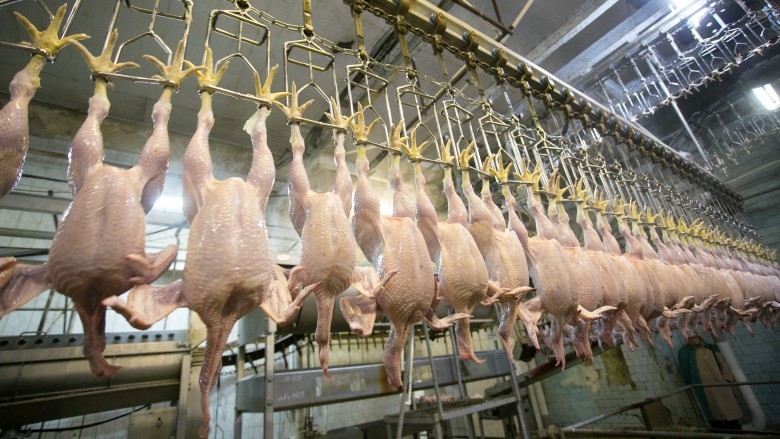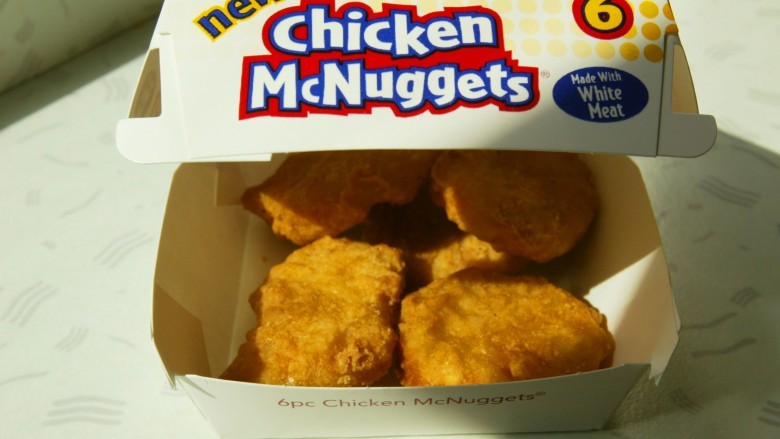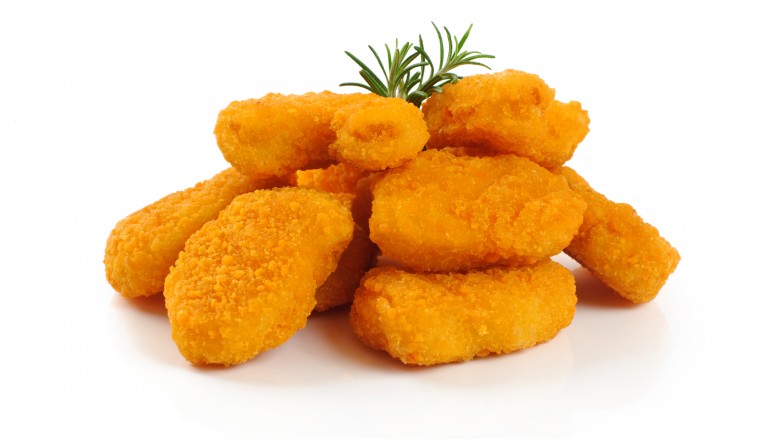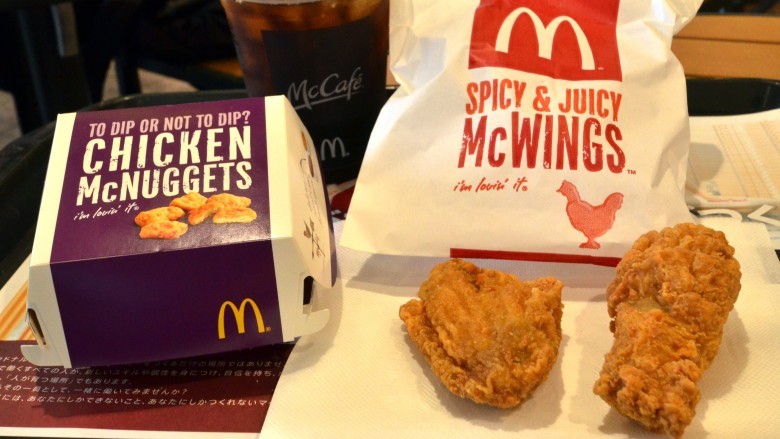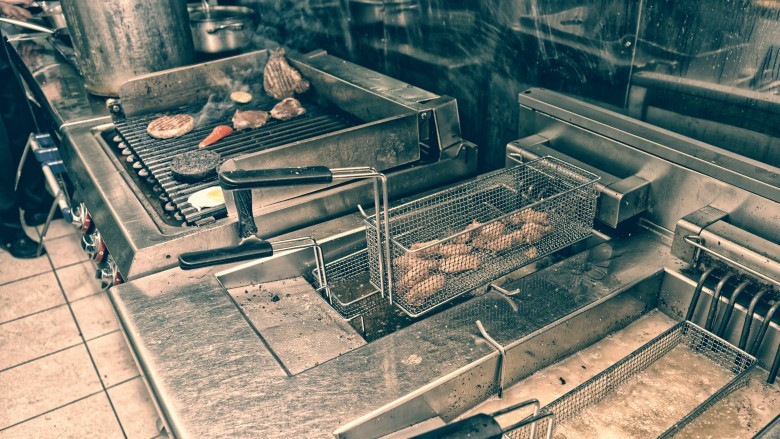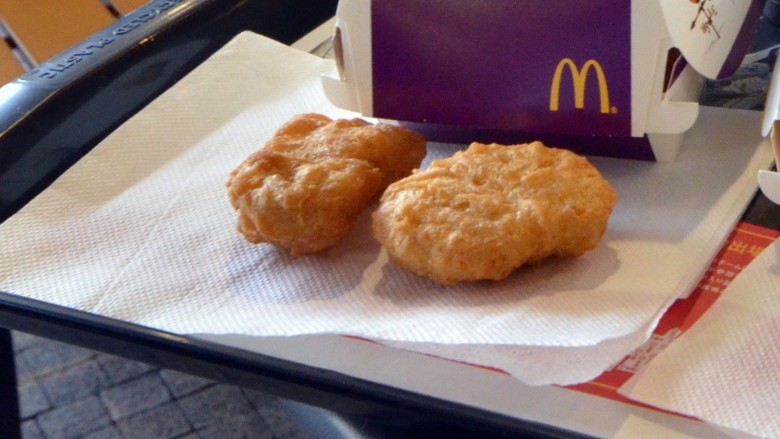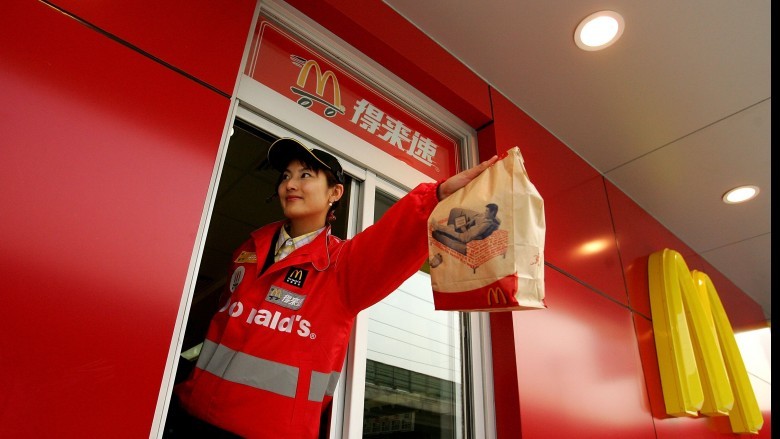What's Really In McDonald's Chicken McNuggets
I want to be crystal clear right up front: I love McDonald's. Yes, this tree-hugging, make-my-chicken-broth-from-scratch, won't-buy-berries-unless-they're-organic foodie loves McDonald's. I haven't eaten at Burger King in years, and the mere thought of Taco Bell or White Castle makes me nauseous, but something about the barely-unchanged-since-my-childhood taste of a McDonald's cheeseburger tastes like home. I also have a slight Egg McMuffin problem. Do I eat it every day? Hardly. It's hangover food. It's late-night "being bad" food. It's a once-in-a-blue moon treat (that I oddly craved constantly when I was pregnant). Through my adulthood, my relationship with McDonald's was like the one you have with an old, close friend from elementary school. You don't see them often, but you always enjoy catching up.
But then my baby daughter grew up into the 7-year-old she is today. And though my best intentions took us through organic homemade baby food purees and low-sugar pumpkin muffins in her lunchbox (not a hit), I now have a tiny human who loves "Old McDonald's." So once a week, after her music lesson, we pull up to the drive thru and get her the usual — a cheeseburger Happy Meal with a four-piece McNugget on the side.
But is it really that bad? As I sat and pondered this very question while inhaling the aroma of her fries, I decided to really delve into the research of one item from the menu. It's the one that's been under the most scrutiny and controversy in recent years, and the one that McDonald's marketing has been making great claims about. So let's explore what's really in McDonald's Chicken McNuggets.
What are the actual ingredients in McNuggets?
McDonald's is pretty forthcoming with the current ingredient list of their famous chicken McNuggets — it's listed right there on their website:
"Ingredients: White Boneless Chicken, Water, Vegetable Oil (Canola Oil, Corn Oil, Soybean Oil, Hydrogenated Soybean Oil), Enriched Flour (Bleached Wheat Flour, Niacin, Reduced Iron, Thiamine Mononitrate, Riboflavin, Folic Acid), Bleached Wheat Flour, Yellow Corn Flour, Vegetable Starch (Modified Corn, Wheat, Rice, Pea, Corn), Salt, Leavening (Baking Soda, Sodium Aluminum Phosphate, Sodium Acid Pyrophosphate, Calcium Lactate, Monocalcium Phosphate), Spices, Yeast Extract, Lemon Juice Solids, Dextrose, Natural Flavors."
Should any of these ingredients cause you concern? Let's break some down.
What exactly are these ingredients?
White boneless chicken doesn't sound too bad, does it? According to this video, sponsored by McDonald's, it is the only part of the chicken currently in the McNuggets recipe. What quality is the chicken? As of 2016, McDonald's chicken is "not treated with antibiotics important to human medicine." An important step, for sure. At the end of the day, though, the chicken is still sourced from mass-market factory farms.
Vegetable oil and vegetable starch: If you're avoiding GMOs, you can count on the likelihood of many of these ingredients coming from genetically modified sources.
Hydrogenated soybean oil is a fully hydrogenated oil that does not contain the trans fats that are found in partially hydrogenated oils. The problem here? Hydrogenated oils can sometime be put through a process called "interesterification," with some scientific studies indicating they may be just as harmful as trans fats to human health.
Yeast extract is sometimes accused of containing MSG, a chemical that many shun, but it actually is a source of plain old glutamate (the "G" in MSG), which is a naturally occurring substance in foods.
Those are the ingredients that sound relatively normal. How about the rest?
What are the chemical-sounding ingredients?
While some of the ingredients sound like pretty reasonable additions to chicken McNuggets, it's hard to tell with others. What are these things?
Dextrose is an added sugar that is most often derived from GMO corn. It's a cheap food additive commonly used in both sweet and savory processed foods to sweeten, texturize, and extend shelf life.
Sodium aluminum phosphate is often used in the breading of processed foods, and causes some people concern over aluminum's links to Alzheimer's disease. But the link hasn't been conclusively proven, and most of us regularly consume aluminum from other sources.
Natural flavors, another common additive in processed foods, aren't necessarily as natural as they seem. They're condensed extractions that often contain man-made chemicals and preservatives known as "incidental additives" that aren't required to be included on the label. With natural flavors, a food distributor can ensure that products distributed to a mass market are uniform in flavor.
Sodium aluminum phosphate, sodium acid phosphate, and monocalcium phosphate are sources of inorganic phosphorous that are commonly found in processed foods. While phosphorous naturally occurs in most protein-rich foods and is vital to human life, inorganic phosphorous has been linked in scientific studies to cardiovascular disease, osteoporosis, Type 2 diabetes, and obesity. Phosphates should be strictly limited by anyone suffering from chronic kidney disease. Phosphates are often used as preservatives in processed foods. So how can McDonald's claim it no longer uses artificial preservatives in the McNuggets? We'll get to that.
The old recipe vs. the 'healthier' recipe
The McNuggets recipe has changed, and McDonald's wants you to know it. 2016's marketing boasts of a simplified list of ingredients in many McDonald's products, including the famous fried nuggets of chicken. Along with a promise that all its chicken was now free of "antibiotics important to human medicine," McDonald's has removed some of the more questionable ingredients from the McNuggets recipe, boasting that McNuggets no longer contain artificial preservatives. So what exactly did they remove?
Citric acid. Though it also comes from lemons, most citric acid used industrially comes from Aspergillus niger, the same mold that gives us black mold. Used as a preservative, the ingredient has been replaced with lemon juice solids, which have naturally occurring citric acid. Sodium phosphate is widely used as a preservative in processed foods, particularly meats, as a tenderizer and emulsifier.
TBHQ, aka tertiary butylhydroquinone. Author Michael Pollan made waves when he mistakenly referred to this preservative as being derived from lighter fluid in his book The Omnivore's Dilemma, but it is still nasty stuff. TBHQ is a man-made antioxidant that is used to preserve foods that contain fats, but it's also used in cosmetics, paints, and varnishes. In mega-large doses it can cause nausea, collapse, and even death, but you'd probably need to eat 11 pounds of chicken McNuggets (made with the old recipe) to hit that level. However, take a look at the Material Safety Data Sheet used by factories that handle the stuff, and ask yourself if you want to swallow even the smallest dose of it. TBHQ is also being studied for possible links to the rise in food allergies.
It's no wonder McDonald's was anxious to remove some of these ingredients from McNuggets. Good news, right? Well, don't forget to read the small print.
What are McNuggets cooked in?
Though TBHQ is absent from the new McNuggets recipe, McDonald's still hasn't removed it from all the cooking oil. The McDonald's website indicates that TBHQ oil may still be in the fryers of many of its restaurants.
I emailed Becca Hary, global director of media relations at McDonald's, who told me that "prior to August 2016, our former Chicken McNuggets were cooked in oil that contained an artificial preservative that is no longer added to the restaurant cooking oil." No word, however, on how long it will take restaurants to transition to the new oil that McDonald's is making. Citric acid is still listed as an ingredient in the "old" oil, too.
So what about those phosphates?
This is where things get tricky. Yes, TBHQ and citric acid have been removed from the primary ingredient list. Sodium phosphate has been removed from the ingredient list of the meat portion of the nugget, where it's presumably been used as a preservative adding moisture to meats, However, sodium aluminum phosphate, sodium acid phosphate, and monocalcium phosphate are still being used in the leavening of the McNugget's breaded coating. What's the difference you ask? The difference lies in what exactly the phosphates are used for. In the case of the current McNugget recipe, the particular phosphates in question are inexpensive leavening agents (they bind with baking soda to rise, color, and crisp the breading), not preservatives.
Let's get technical, then. Can McDonald's say its product is free of artificial preservatives because the artificial preservatives in the food aren't there for the purpose of preserving the food? Yes, it can. But it's not just fast food giants like McDonald's that include ingredients like this in their foods. In fact, sodium phosphates are just one of the many artificial food additives currently allowed by the USDA for use in packaged organic foods. I found sodium phosphate listed just yesterday on my daughter's package of organic, grass-fed, "free from all artificial preservatives" macaroni and cheese.
Keep in mind folks, McDonald's promised to remove all artificial "preservatives" from their McNuggets, but not necessarily artificial "additives," a move that proves to be much more difficult than it may seem. (McNuggets, by the way, have never contained artificial colors or flavorings.)
What about the pink slime?
You've probably seen the videos and photographs that went viral a few years back, like the one above, illustrating the "pink slime" that was said to be used in McDonald's burgers and chicken McNuggets. The official word from McDonald's is that the photos and videos that made the rounds didn't come from a facility that makes McDonald's food. So what was that stuff?
The pink slime you see in the video is what's know as mechanically separated meat. It's created by taking every last scrap of pork or poultry and moving it through a high-pressure sieve, cleaning it with ammonia, and then sometimes adding in some artificial colors and flavors on top for good measure. This meat and chemical slurry can be found in processed meats like bologna, hot dogs, jerky, and packaged chicken nuggets. As of 2010, the USDA ruled that products containing mechanically separated meat must say so on their ingredients list.
So did McDonald's ever use it? Yes, but it's been gone for a while. McDonald's reported in 2012 that mechanically separated poultry and ammonia-treated beef had already been cut out of its supply chain. Many gave kudos to celebrity chef Jamie Oliver's campaign against McDonald's use of mechanically separated meat.
Are McNuggets different around the world?
In short, yes. Taking the website of McDonald's U.K. as just one of many examples: all of its food is 100 percent free of GMOs, has never included ammonia, and has always been free of MSG. McDonald's U.K. serves organic milk in its Happy Meals, and its cooking oil is free of dimethylpolysiloxane. Even with the considerable moves McDonald's has been making in the U.S. to answer growing consumer demand for more wholesome food, it would seem our neighbors around the world are enjoying a product that offers fewer additives and is of better quality. So if all these other countries have figured it out, why can't it be done here?
And while we're at it, why can't we get Indonesia's spicy chicken bites, and Italy's spinach and cheese nuggets?
So should you eat them?
Far be it from me to tell you how to live.
Here's what we know. McDonald's serves fast food. Processed food. And processed food is bad for you. It's low in nutrients, high in sugar, and filled with chemical additives. Consumption has been linked to heart disease, obesity, insulin resistance, and cancer. Processed foods have been engineered to be "hyper-rewarding" to our brains, leading to overconsumption and even addiction. McDonald's has made big strides in recent years to clean up their products, removing many ingredients with the most "ick" factor. Is it enough?
The devil is in the dose. Here's the way I look at it — If 90 percent of the time I'm eating healthy, organic, whole foods, and feeding them to my family, then I don't feel bad about an occasional indulgence in my fast food of choice. But I would never kid myself that something on that menu is good for me. As for feeding it to my child, I remind myself that as often as she asks for McDonald's, she also asks for black olives, pineapple, and cinnamon applesauce. (And now that I think about it, I also ate those things when I was pregnant.)
I leave it to you to decide how McNuggets fit into your lifestyle and how you feel about eating them. If you do decide to eat them, though, I highly recommend the buffalo dipping sauce.
